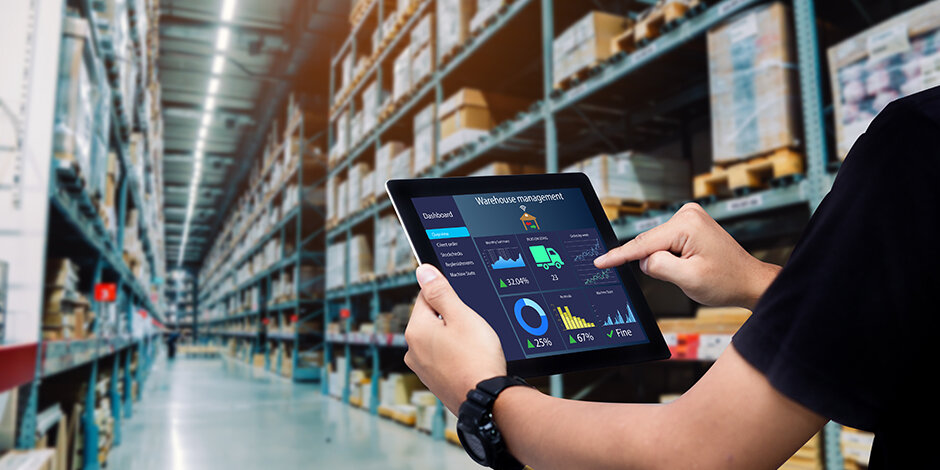
Third-party logistics (3PL) providers use technology to enhance their services and remain competitive. By harnessing technology, 3PLs can improve operational efficiency, minimize errors, and deliver top-notch service to their clients.
Technology has paved the way for unprecedented efficiency, accuracy, and adaptability in logistics. From advanced software systems and automation tools to cloud-based platforms and data analytics, technological innovations help logistics companies streamline operations, optimize resources, and enhance customer satisfaction.
As technology evolves, logistics professionals can look forward to even more transformative solutions that will ensure that logistics operations remain agile and resilient in the face of future challenges. Here are the benefits of technology in logistics.
Table of Contents
Enhanced Visibility
3PLs use advanced tracking technologies such as GPS, RFID, and IoT sensors to monitor shipments throughout the supply chain. Logistics managers can track goods’ location, status, and condition. Customers, suppliers, and other partners can also track shipments, monitor progress, and receive updates at any time.
This enhanced visibility allows proactive issue identification. With access to real-time information, they can quickly respond to disruptions, reroute shipments, and implement contingency plans to minimize delays and mitigate risks.
Warehouse Management Systems
Warehouse Management Systems in 3PL operations provide real-time inventory levels. By accurately tracking stock movements, these systems reduce errors, minimize stockouts, and prevent overstock situations, improving inventory accuracy.
Warehouse management systems also enable efficient space utilization within the warehouse by providing insights into the facility’s layout and storage capacity. Through slot optimization and dynamic location assignment, proper warehouse management maximizes storage density, minimizes travel time, and optimizes picking routes, ultimately increasing warehouse efficiency.
Optimized Transportation Planning
A third party logistics company use transportation management systems with advanced algorithms to calculate the most efficient delivery routes. These systems help minimize travel time, reduce fuel consumption, and lower transportation costs by considering traffic conditions, road closures, and vehicle capacities.
The software also enables the consolidation of shipments from multiple sources into full truckloads or optimized routes. By consolidating loads, logistics providers can reduce empty miles, maximize vehicle utilization, and minimize transportation expenses.
Inventory Management
3PLs use advanced inventory management systems to accurately track stock levels and monitor inventory in warehouses, distribution centers, and transit. This helps with better decision-making and reduces the risk of stockouts or overstocking.
Barcode scanning, RFID tagging, and automated data capture technologies improve inventory accuracy by minimizing manual data entry errors. Technology streamlines order fulfillment processes by automating order processing, picking, packing, and shipping tasks.
Inventory management systems integrate with order and warehouse management systems to ensure accurate order fulfillment. This reduces processing times and, most importantly, improves customer satisfaction.
Automation and Robotics
Automation technologies such as robotic arms, automated guided vehicles, and conveyor systems streamline 3PL warehouse operations by eliminating repetitive tasks such as picking, packing, and sorting.
Robotic arms equipped with advanced sensors and algorithms handle delicate or complex tasks consistently and accurately, reducing errors and improving order accuracy. Automated systems can operate continuously, enabling round-the-clock warehouse operations without breaks or rest periods.
This ensures faster order processing and fulfillment, allowing logistics providers to meet customer demands and deadlines more efficiently.
Predictive Analytics
Predictive analytics algorithms analyze historical data and market trends to forecast future product demand. Logistics providers can use this information to optimize inventory levels, reduce stockouts, and improve customer service.
Predictive analytics also optimize resource allocation by identifying peak demand periods and allocating resources accordingly. When resources such as warehouse space, labour, and transportation capacity are distributed based on predicted demand, logistics providers can simultaneously improve resource utilization and reduce costs.
Scalability
3PLs rely on technology to grow and adapt quickly. Through advanced software and digital systems, these providers can manage and track inventory more efficiently, ensuring goods are in the right place at the right time.
This technology allows them to handle larger orders without significantly increasing their manpower. This also means they can adapt quickly to changes in demand and volume, ensuring smooth operations even during peak seasons or unexpected fluctuations.
Customized Solutions
Technology enables logistics providers to offer personalized services and value-added features to customers. For example, logistics software may include customer portals or mobile applications that provide customers with self-service access to shipment tracking, inventory management, and reporting tools. It allows them to customize their experience and access information as needed.
Technology-driven solutions offer flexibility to adapt to customer needs and business requirements. As customer needs evolve or grow, logistics providers can scale solutions up or down, add features, or adjust configurations to accommodate changing demands. This ensures continued relevance and value.

